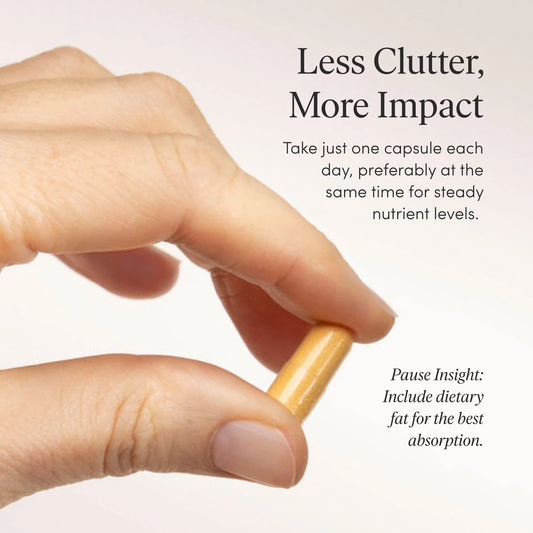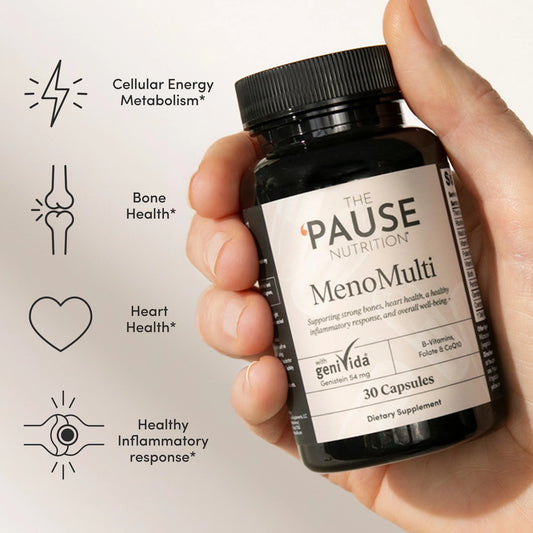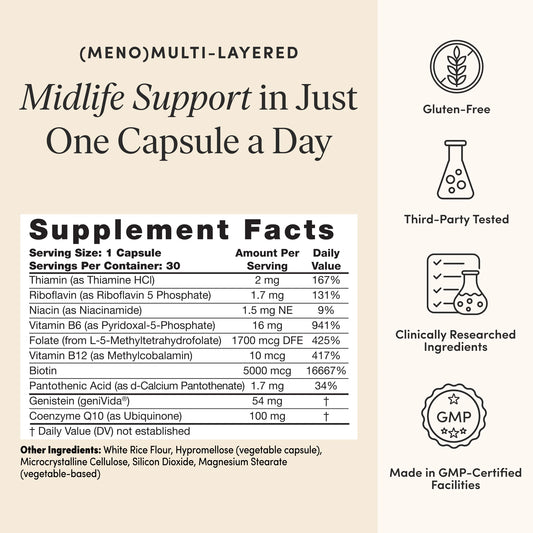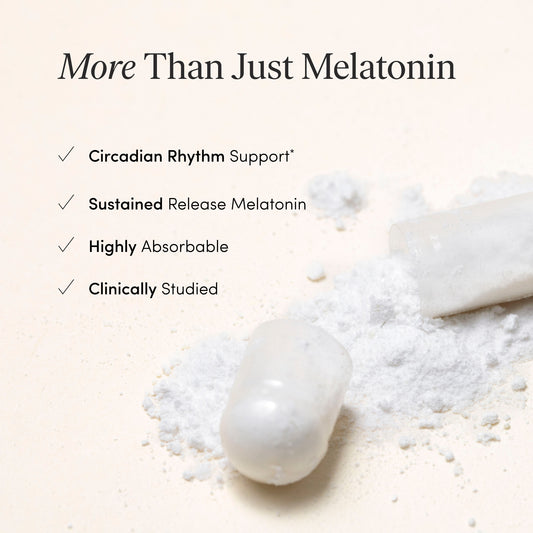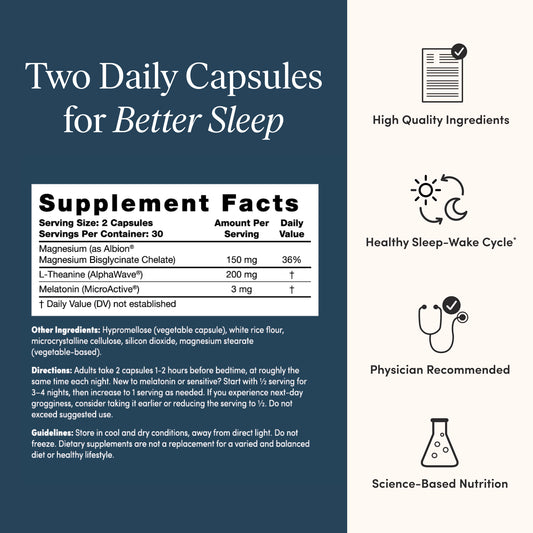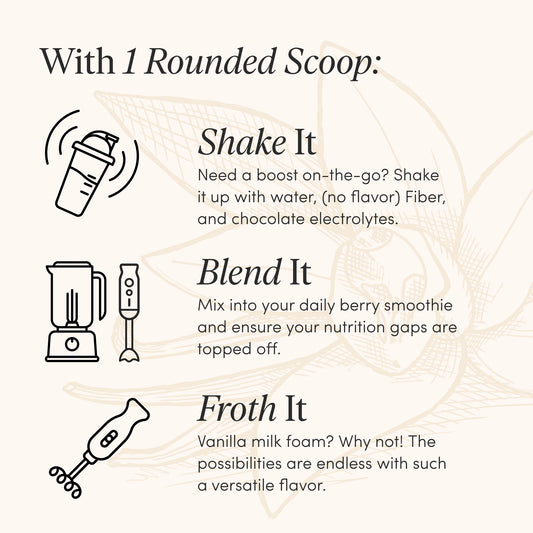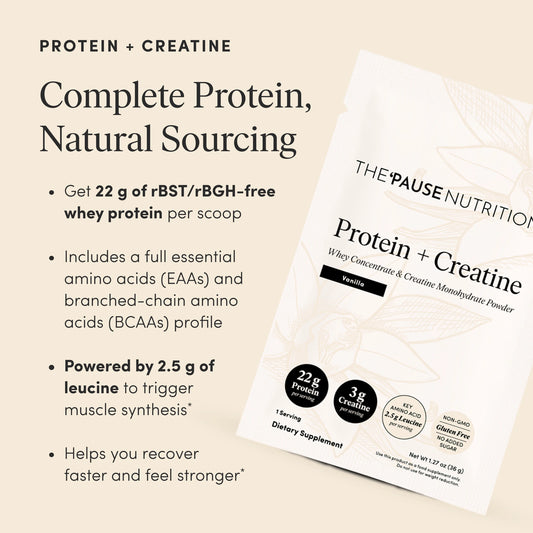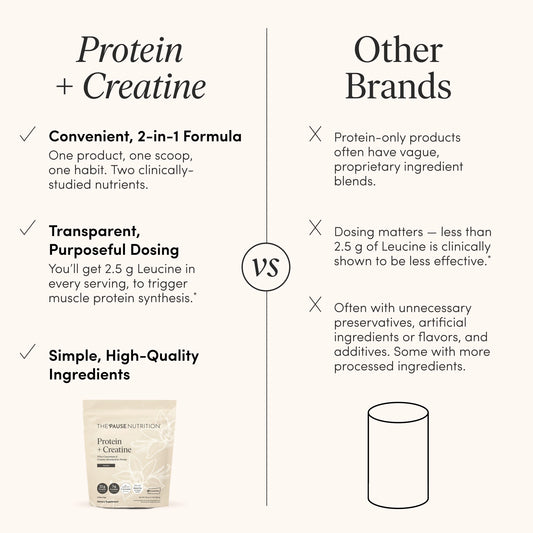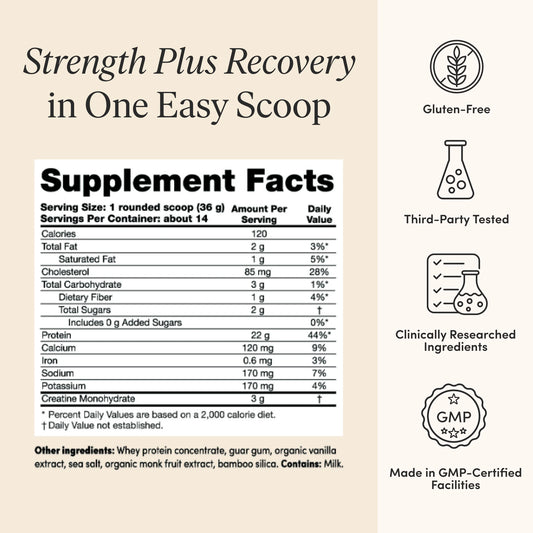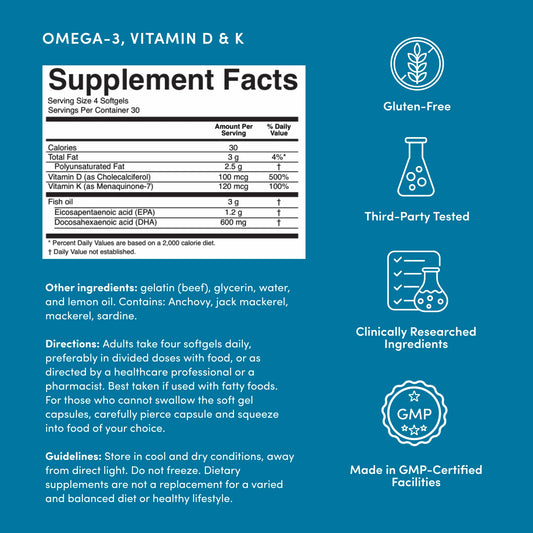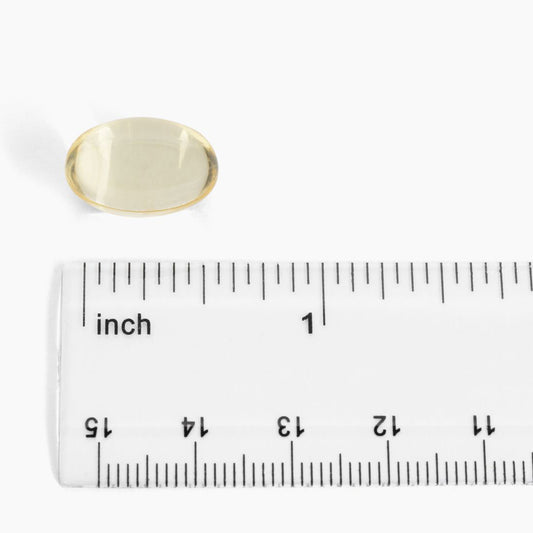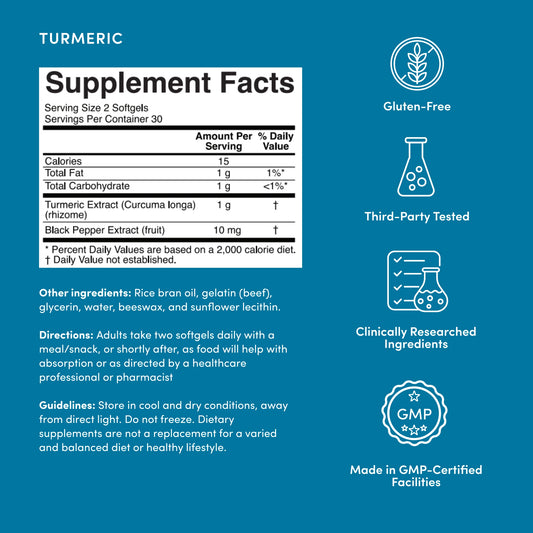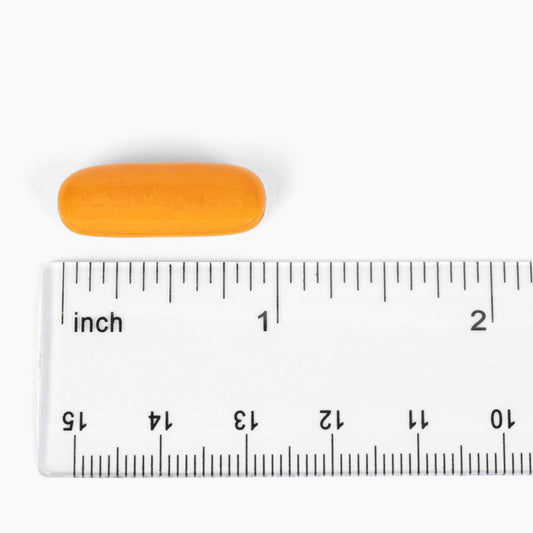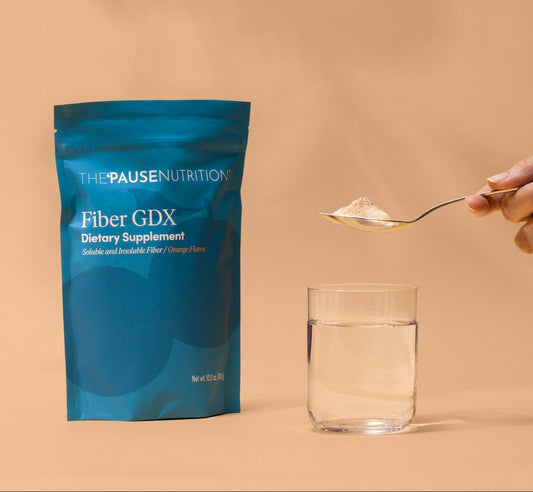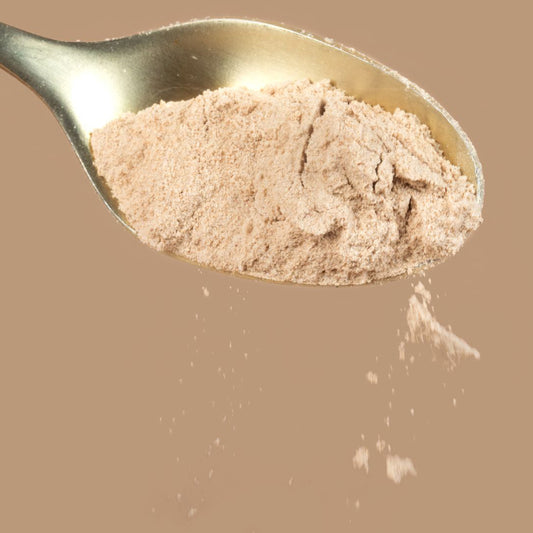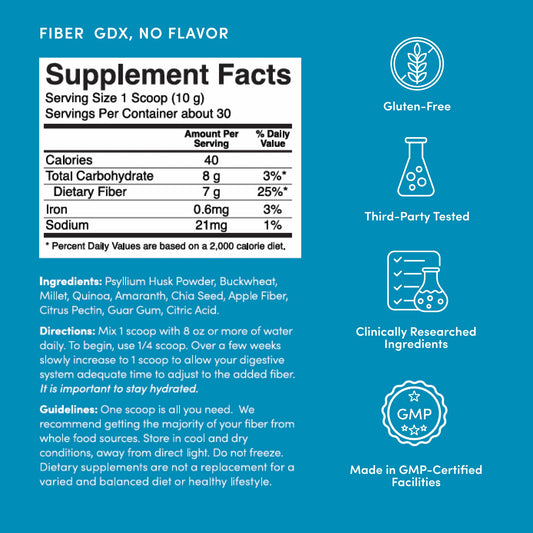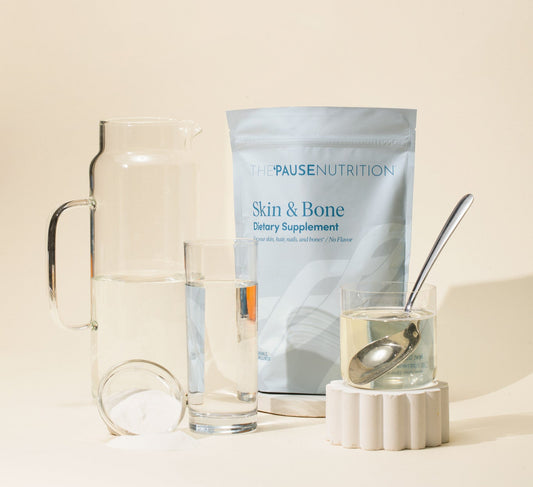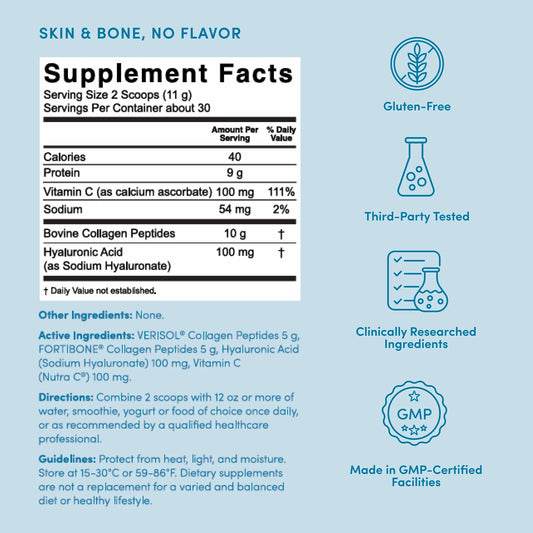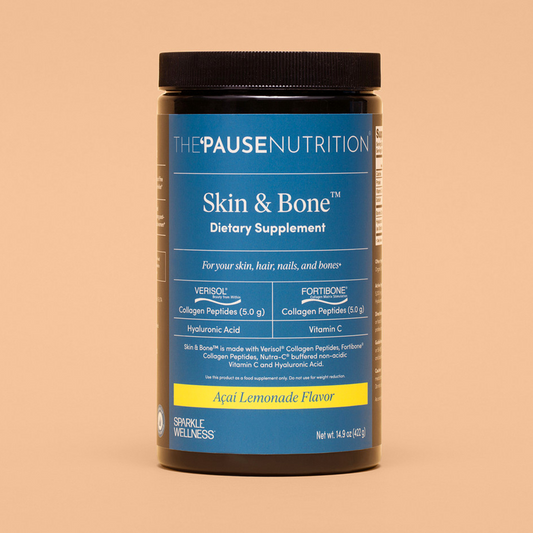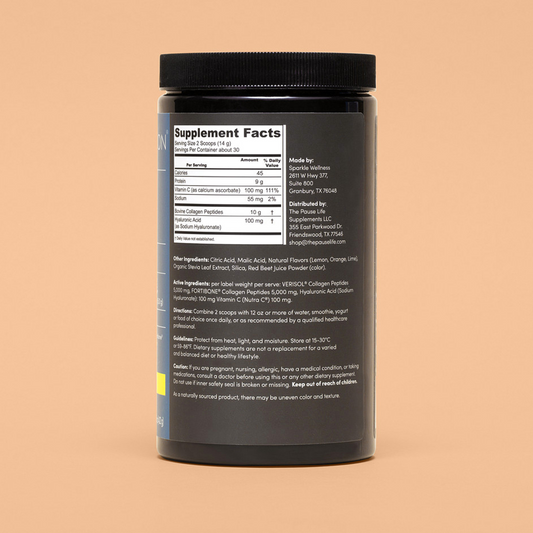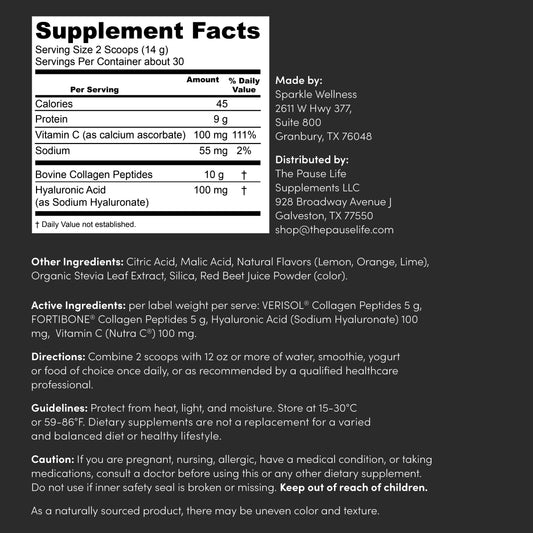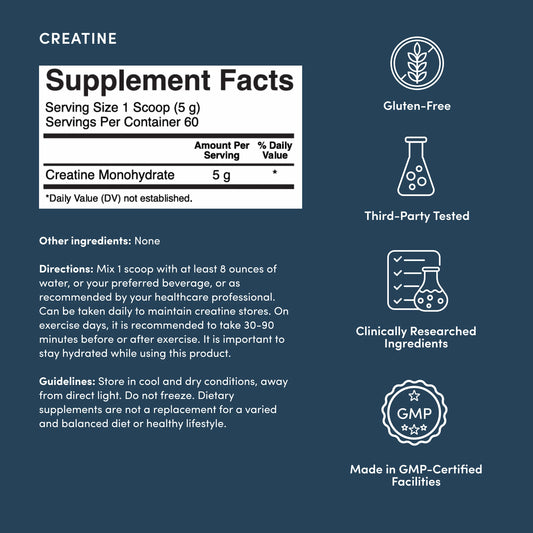8 Science-Backed Tips for Better Metabolic Health
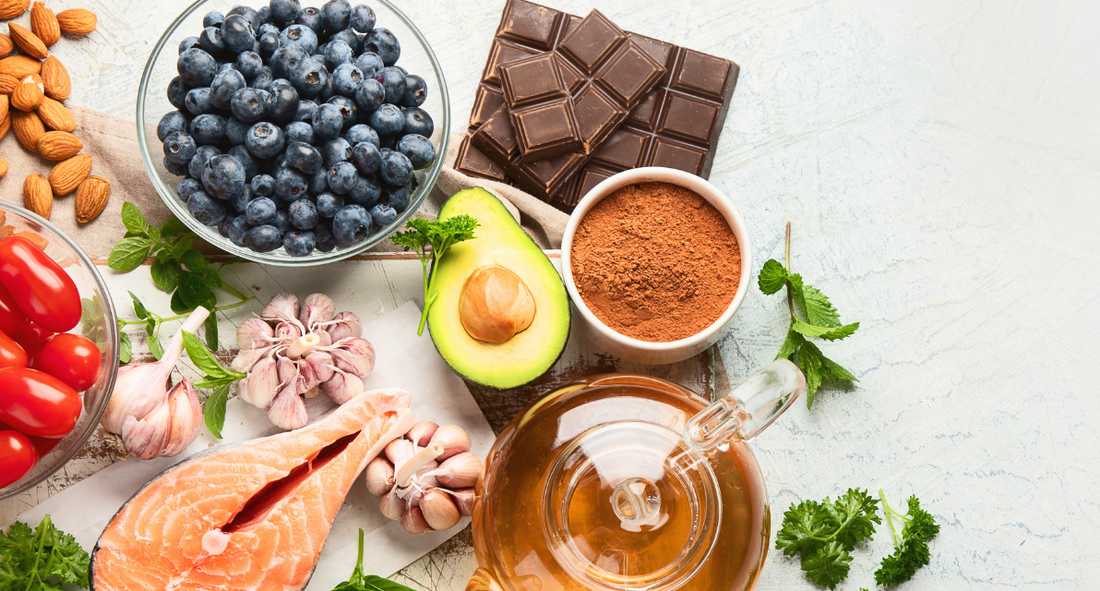
Share
Try These Smart Eating Strategies to Help Keep Blood Sugar Stable
When it comes to eating for health during perimenopause and menopause, one of my first recommendations is to limit the amount of sugar you’re eating. The American Heart Association (AHA) recommends limiting added sugars to less than 25 grams (or 6 teaspoons) a day, which may seem easier said than done.
So many tempting foods — including sweet drinks and baked treats — are loaded with sugar. Just one cupcake, a couple of margaritas or a double scoop of Rocky Road can put you over six teaspoons a day. There’s also a surprising amount of sugar added to healthy-sounding foods like protein bars, granola and fruit flavored yogurts. That probably explains why the average American eats around 17 teaspoons of added sugars (1) a day.
Why Limiting Sugar Intake Matters
There’s more to metabolic health than just avoiding added sugars. While carbohydrate-rich foods like grapes, sushi rolls, oatmeal and sweet corn contain important nutrients, did you know they might also spike your blood sugar to an unhealthy level?
When our blood sugar stays elevated over time, it can disrupt the way our bodies process sugars. We usually process food we eat like this:
- When we eat some food, our stomach and small intestines turn it into glucose, a form of sugar our body uses for energy.
- The pancreas releases insulin, which signals our body to use that fresh glucose for fuel.
- Our cells open up to receive that glucose, and our blood sugar goes back down to a normal level.
- The pancreas stops making insulin until we eat again.
When we eat a lot of foods with added sugars, or a large amount of natural carbohydrates like potatoes or pineapple often, our blood sugar can spike and crash or stay elevated. If we don’t use up that glucose, our body will convert it to fat and store it for a rainy day. This leads to weight gain (hello, menopause belly) and over time, what’s called insulin resistance. When I’m talking to my patients, I describe insulin resistance as the first stop on a train of metabolic dysfunction. So if we don’t want to reach the next stop, which might be prediabetes or type 2 diabetes, then it’s time to make some lifestyle changes.
Insulin resistance can also lead to metabolic syndrome, a group of conditions that significantly raise your future risk of serious conditions like coronary artery disease and stroke. The markers of metabolic syndrome include elevated triglycerides, low high-density lipoprotein (HDL) cholesterol, high blood pressure and elevated blood glucose levels.
And, it turns out our blood sugar isn’t just affected by what we eat. Chronic stress and poor sleep can impact our insulin and blood sugar levels. So can hormones including estrogen, progesterone and cortisol. And, when estrogen starts fluctuating during perimenopause and then falling during the menopause transition, it becomes even more difficult to keep blood sugar stable. If you could use some additional support to get (and stay) asleep, consider adding Pause Sleep® to your nighttime routine.
It’s not our fault, but it is our responsibility to manage our lifestyle habits including our blood sugar if we want to preserve our health. Realizing you’re eating too much sugar is an opportunity to refine not just what you’re eating, but how you’re eating so you can prioritize stable blood sugar.
Fortunately, we can help keep our blood sugar even and insulin levels in the normal range with these seven science-backed, smart eating strategies.
8 Ways to Keep Blood Sugar More Stable
Know your numbers
You can’t change what you don’t acknowledge. To learn exactly how much sugar you’re eating, track your nutrition in a tracking app (like my favorite - Cronometer) for about a week. If you need to bring that number down, then try out my free Pause Life 10-Day Sugar Detox, which is a great way to reset your palate so you don’t crave sugary foods as frequently. You’ll be surprised how quickly you’ll come to appreciate the naturally occurring sugars in fruit, and you’ll be setting yourself up for success with your long term metabolic health.
Get moving
Muscle is the number one endocrine organ and it’s the best way to use up glucose in your bloodstream after a meal. A study of healthy volunteers found a 30-minute walk (2) was an excellent way to moderate the increase in blood sugar after a carb-rich meal. So is doing low to moderate intensity aerobic exercise like 30 squats (3) or even enthusiastic dancing. Get moving as soon as you can (4) after eating for the biggest impact.
Need some inspiration? Check out some of the 'Pause Life team's favorite fitness essentials, including the space saving WalkingPad walking treadmill.
Have a high-protein break-fast
What you eat matters more than when you eat, and the break-fast meal may be the most important meal of the day. Starting off with a high-protein meal, instead of one filled with carbs and sweet foods, can keep your blood sugar lower for the rest of the day. And that the positive effects of a high-protein break-fast (5) can keep blood sugar stable through dinner time.
Just add cinnamon
Cinnamon isn’t just a sweet spice for desserts. It has powerful active ingredients that could improve the way your body responds to sugars. A 2019 randomized controlled trial–considered the gold standard of studies–had people with diabetes take 500 mg of ground cinnamon (1 rounded teaspoon) twice daily or a placebo for three months. The test subjects saw improvements in A1C, fasting insulin levels and insulin resistance (6). They also lowered their body mass index, body fat, visceral fat, and cholesterol values. Study subjects with the highest body mass index (above 27) had the biggest improvements.
Eat fiber first
Remember when dinner always began with a salad? That mixed green salad did more than fill you up; fiber can slow your digestion so your blood sugar rises more slowly after your meal. And that’s true even if you have a dinner roll or apple pie later. Eating fiber-rich food such as blueberries, kiwifruit (7) (especially with the skin), apples (8), garbanzo beans, spinach or broccoli before a meal can help keep blood sugar level. So if you’re planning on ordering pasta, start off with lentil soup, roasted Brussels sprouts, or a steamed artichoke. Or if you’re on the go, a 2018 nut study (9) found eating ⅓ cup of skin-on peanuts or about 23 whole almonds can do the same thing. Other great on the go options are roasted edamame or fiber-packed MenoWell bars.
Pair carbs with fat, fiber and protein
Eating starchy foods like mashed potatoes, pineapple or corn chips on their own may send your blood sugar soaring. But adding fiber (10), protein, and healthy fat can help decrease the impact on blood sugar. In a Finnish study (11), pairing mashed potatoes with chicken, fat and a salad cut a mashed potato glucose spike in half. Plus, this nutrient combination will help you feel satisfied longer. So try pairing those mashed potatoes with a steak and a green salad, add some cottage cheese or unsweetened Greek yogurt to the pineapple and enjoy some corn chips with half an avocado and some black beans.
Have a spoonful of vinegar first
Downing a tablespoon of vinegar in water before eating a starchy meal is another way to control blood sugar levels. A 2021 review found apple cider vinegar had a significant impact (12) on fasting blood sugars, triglycerides and total cholesterol. The people with the best results ate at least a tablespoon of vinegar or took it regularly for eight weeks or more. If you sip vinegar water, use a straw to protect your tooth enamel and protect your esophagus. If drinking vinegar isn’t appealing, try whisking it with some olive oil and herbs to make a drizzle for vegetables or a tossed salad.
Cool and reheat simple starches
There are two kinds of carbs: complex carbohydrates like broccoli and purple potatoes vs. simple ones such as wheat pasta, rice and white potatoes. Complex carbs are better since they have fiber and nutrients that slow sugar absorption. However, you can help your body treat simple starches like complex ones when you cook them, chill them and reheat them later before eating. Cooling and reheating makes simple carbs form resistant starches, which are digested more slowly. A 2020 study by UK researchers found that cooling cooked pasta overnight and eating it the next day significantly reduced blood sugar spikes, (13) Other researchers found the same happens with white rice (14), corn porridge and potatoes (15). Another bonus: our beneficial gut flora love resistant starches.
BONUS
Simplify your routine and your life with Hello Fresh, an excellent meal delivery service with pre-portioned ingredients and easy-to-follow recipes. With high protein, high fiber, vegetarian and family friendly options, there’s something delicious and satisfying for even the pickiest palate. Fresh, delicious meals, delivered to your door, ensures you’re fueling your body with with the nutrients it needs. Enjoy 10 free meals and free breakfast with code MARYCLAIRE50.
Remember, we’re all human, so on a special occasion, enjoy that piece of wedding cake, birthday cupcake or cocktail. One occasional sugary treat isn’t going to wreck your health. But if you regularly find yourself eating a higher than recommended amount of added sugars, the Belly Fat Blast, the 'Pause Strong Challenge our free The ‘Pause Life Community and these tips can help you create some new nutrition and lifestyle habits.
This article contains affiliate links.


















